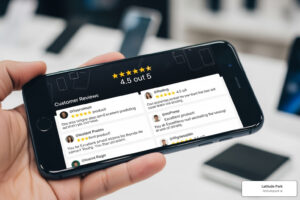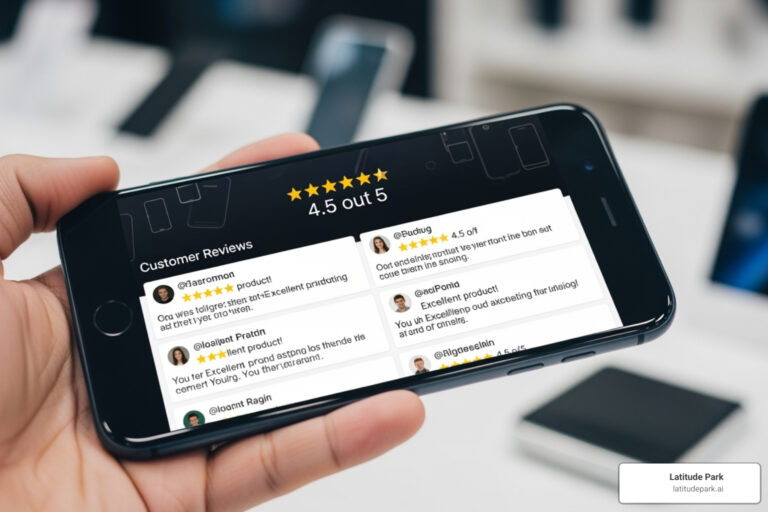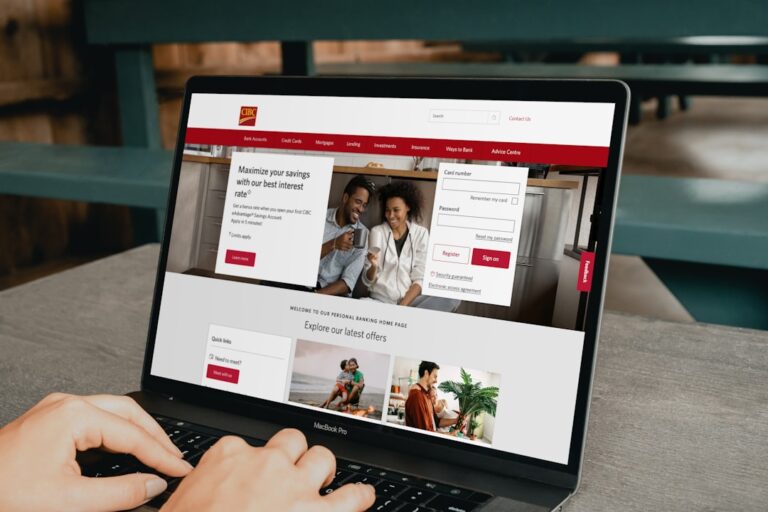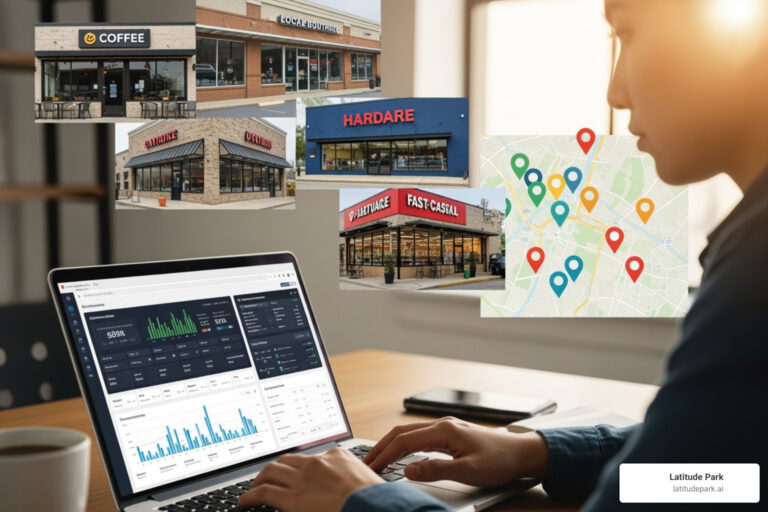What Are Google Local Services Ads?
Google Local Service Ads are a powerful platform helping local businesses appear at the very top of Google search results. Unlike traditional Google Ads, they operate on a pay-per-lead model, so you only pay when a potential customer contacts you through the ad.
Key features of Google Local Service Ads include:
- Top placement – Appear above all other search results and Google Ads
- Pay-per-lead pricing – Only pay when customers call or message you directly
- Trust badges – Display “Google Guaranteed” or “Google Screened” verification
- Local targeting – Reach customers specifically in your service area
- High-intent leads – Connect with customers ready to hire immediately
The platform is designed for service-based businesses like plumbers, lawyers, house cleaners, and HVAC contractors. After completing Google’s free screening and verification process, your business earns a trust badge that builds customer confidence. You can control your budget by setting weekly lead targets and adjust your spending anytime.
Research shows that a single lead can cost anywhere from $25-$90 depending on your service area and industry, making LSAs a cost-effective way to attract qualified customers who are actively searching for your services.
I’m Rusty Rich, founder of Latitude Park. Since 2009, our digital advertising agency has helped hundreds of businesses, including multi-location franchises, optimize their Google Local Service Ad campaigns. I’ve seen how these ads can transform lead generation when set up correctly.
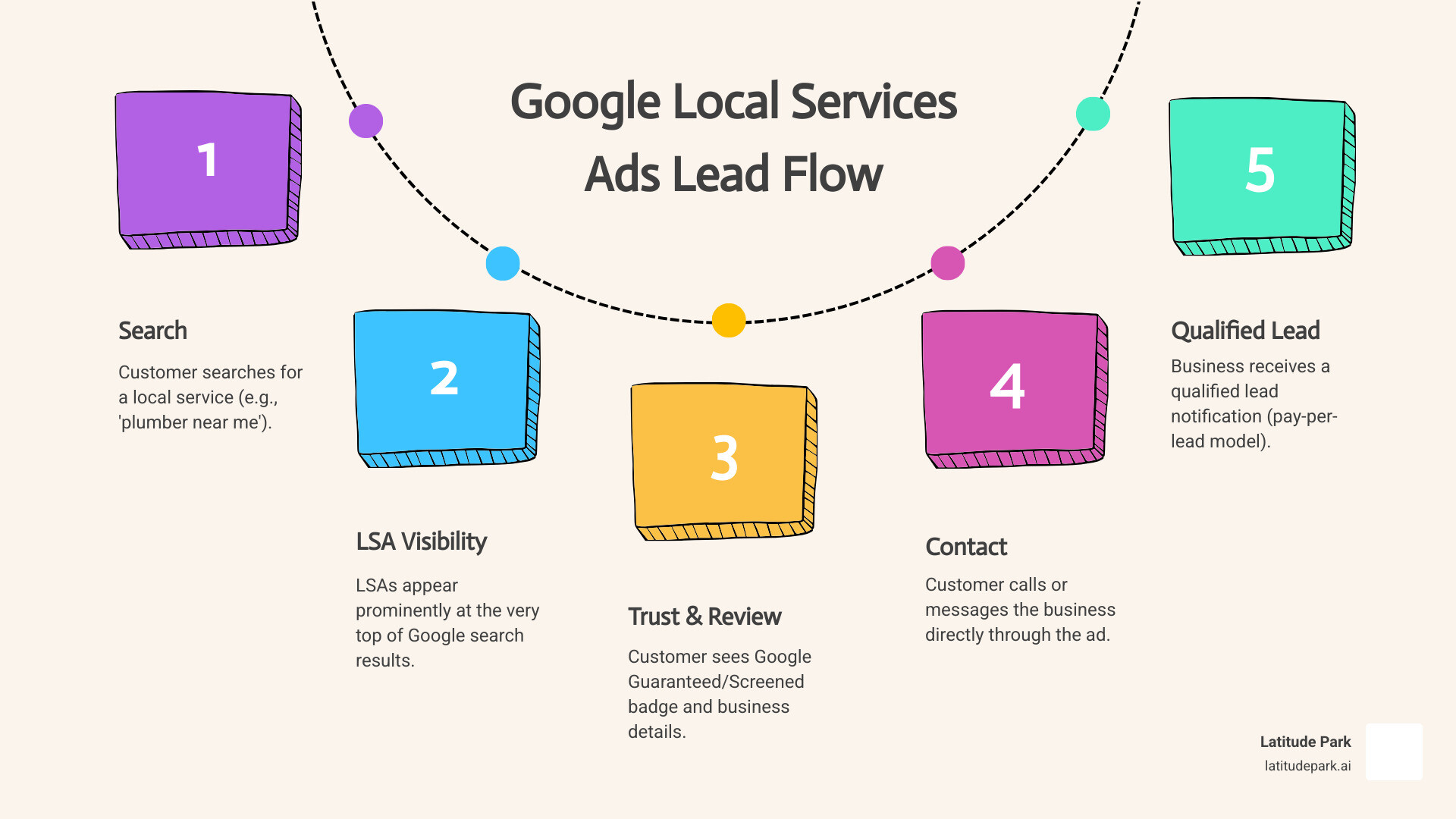
Key google local service ad vocabulary:
- best google ad extensions for local business clients
- best google ads retargeting techniques for my local business clients
How the Google Local Service Ad Platform Works
Imagine a customer’s AC breaks on the hottest day of summer. Their first move is to search Google for “AC repair near me.” This is where Google Local Service Ads become your business’s best friend.
The beauty of LSAs lies in their simplicity and effectiveness. When potential customers search for services like yours, your google local service ad appears right at the very top of Google’s search results – even above traditional paid ads and organic listings. This prime real estate means maximum visibility when it matters most.
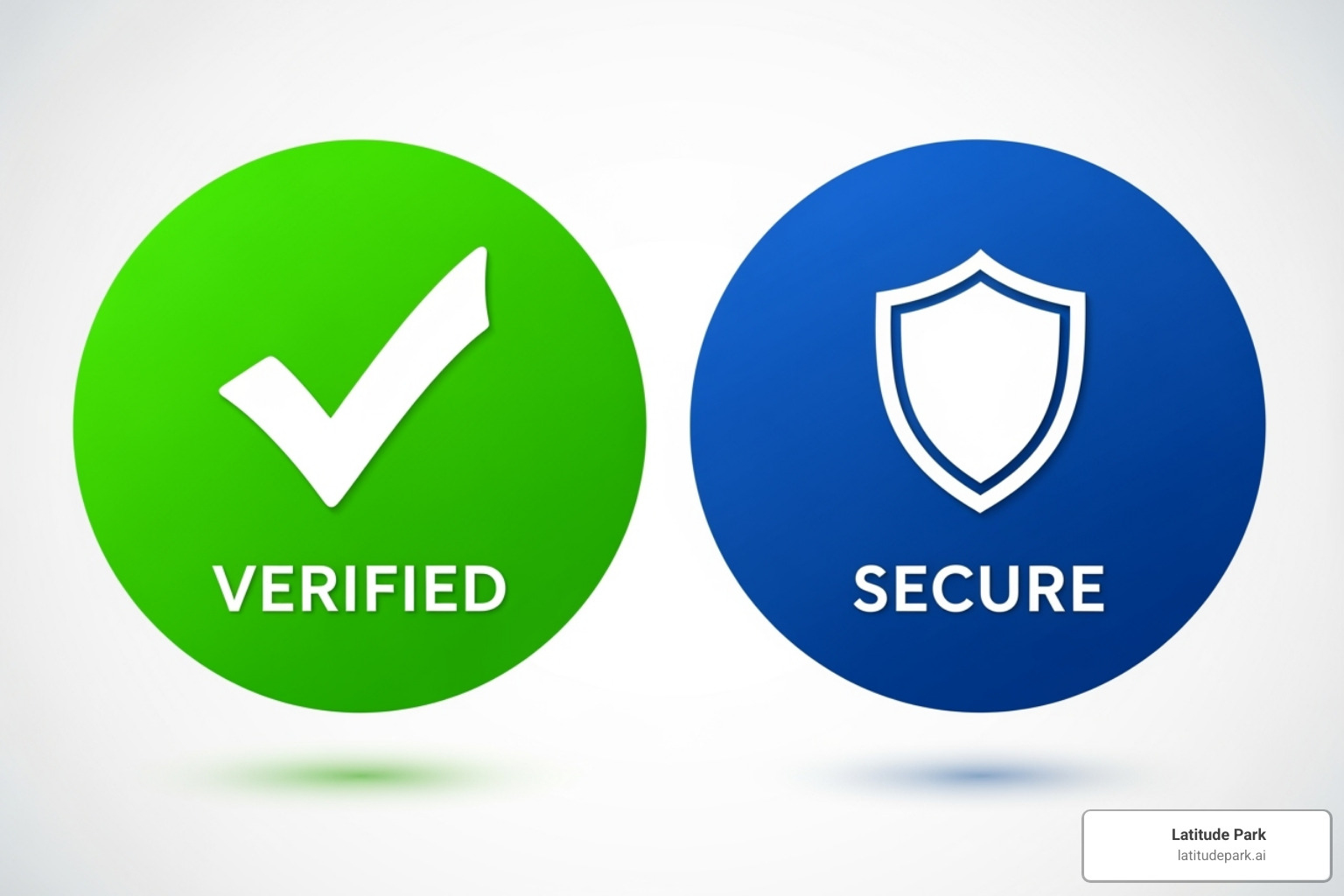
What makes LSAs truly special is their pay-per-lead model. You’re only charged when someone actually contacts you through the ad—whether they call or send a message—eliminating payment for clicks that don’t convert.
When customers see your ad, they’ll notice your business name, star rating from reviews, phone number, service area, and most importantly, a Google Guaranteed badge or Google Screened badge. These trust signals from Google itself give customers confidence to reach out immediately.
Eligible Business Categories
The good news? Google Local Service Ads welcome a wide variety of service-based businesses, and the platform keeps expanding to include more industries.
Home services dominate the platform with options like plumbing, HVAC, electrical work, carpet cleaning, landscaping, roofing, appliance repair, garage door repair, locksmiths, painting, tree services, water damage restoration, and window cleaning.
Beyond home services, you’ll find legal services for lawyers specializing in personal injury, family law, criminal defense, and estate planning. Healthcare providers like dentists and doctors can participate, along with automotive services, wellness services, beauty services, and even learning services like tutors and music instructors.
Since eligibility varies by location and specific service type, it’s smart to check your business eligibility on Google’s official page before diving in.
The Power of the ‘Google Guaranteed’ & ‘Google Screened’ Badges
The green checkmarks and badges on LSAs aren’t just decoration—they’re trust-building powerhouses that can transform your business’s credibility overnight.
These badges prove your business passed Google’s rigorous verification process, which is completely free but thorough. Google conducts background checks on business owners and sometimes employees, verifies your professional licenses, confirms adequate insurance coverage, and checks your business registration.
The specific badge depends on your industry. Home service providers typically earn the coveted Google Guaranteed badge, while professional services like lawyers or financial advisors receive the Google Screened badge. Both badges work magic for building customer confidence.
Think about it from your customer’s perspective – when they see that Google has personally vetted your business, they feel safer choosing you over competitors without badges. This translates directly into better conversion rates and more qualified leads. For detailed guidance on earning these badges, visit the Getting started with Local Services Ads help page.
Understanding the Google Local Service Ad Cost Structure
Here’s where Google Local Service Ads really shine: their straightforward, results-focused pricing. Instead of paying per click like with traditional Google Ads, you pay only for valid leads. This means you’re charged only when potential customers contact you through your ad.
This lead-based fee structure eliminates the frustration of paying for window shoppers. Every dollar spent brings you a genuine inquiry from someone actively seeking your services.
Cost per lead typically ranges from $25 to $90, though most businesses see leads in the $25 to $45 range. Several factors influence your costs: your location’s competitiveness, your industry type, the specific job category, and your bidding strategy.
You maintain complete budget control by setting weekly lead targets that align with your business capacity. Need to pause ads because you’re swamped with work? No problem. Want to increase your budget during slow periods? Easy adjustment.
The flexibility extends to real-time management – you can modify your spending anytime or temporarily pause campaigns when you’re unavailable. This ensures your advertising investment always matches your business needs. To get a realistic estimate for your specific services and location, use Google’s budget tool to estimate costs.
Step-by-Step: Setting Up Your First Campaign
Ready to get your business to the top of Google search results? This guide will walk you through setting up your first Google Local Service Ad campaign. The process is straightforward, designed to connect service businesses like yours with customers quickly.
Think of it as building your digital storefront in prime internet real estate, moving you to the top of Google where customers are actively searching for what you offer.
1. Confirm Eligibility and Create Your Profile
Before we dive in, let’s make sure your business is ready for the Google Local Service Ad spotlight. The first step is confirming that your business type and location are eligible for LSAs. Wide range of service industries we talked about earlier? Even though the list keeps growing, it’s always smart to double-check.
Once you’re confirmed eligible, you’ll start building your business profile. This is your chance to make a stellar first impression! Think of this profile as your business card that appears directly in your ad – customers will see this information before they even call you.
You’ll need to gather some essential details about your business: your official business name, the specific services you offer (like “Emergency Plumbing” or “Personal Injury Law”), your physical address or primary service area, and basic contact information including your business hours. Don’t forget to include a brief but compelling description of what makes your services special.
The more complete and accurate your profile, the better your chances of attracting the right customers. Take your time here – this foundation will support all your future success. You can begin this exciting journey by visiting Sign up for Local Services Ads. If you’re new to getting your business visible on Google altogether, our comprehensive guide on How to Put Your Business on Google: A Step-by-Step Guide will give you the complete picture.
2. Complete the Screening and Verification Process
This is where you earn the powerful Google Guaranteed or Google Screened badge. This step might feel a bit like applying for a security clearance, but it’s completely worth it. The free screening and verification process is what separates Google Local Service Ads from other advertising platforms.
Google takes trust seriously, and they want to make sure every business advertising through LSAs meets their high standards. Depending on your industry and location, you might need to submit background check information for yourself and any employees who interact with customers. You’ll also upload copies of your business licenses and insurance certificates to prove you’re properly covered and qualified.
The business registration verification confirms you’re operating legally in your area. I know it sounds like a lot of paperwork, but think about the competitive advantage you’re gaining. Once you pass this screening, you’ll have Google’s seal of approval backing your business. That badge isn’t just a pretty green checkmark – it’s a trust signal that can dramatically increase your conversion rates.
Most businesses complete this process within a few days to a week, depending on how quickly they submit their documentation. The wait is absolutely worth it for the credibility boost you’ll receive.
3. Define Your Service Areas and Job Types
Now comes one of my favorite parts of the setup process – getting laser-focused on exactly who you want to reach. With Google Local Service Ads, you have incredible control over where your ads appear and for which specific services. This precision targeting is what makes LSAs so cost-effective.
When setting your service areas, you can get as specific as individual neighborhoods or as broad as entire counties. A smart approach is to start with the areas where you already do your best work and gradually expand from there. For example, if you’re an HVAC contractor, you might target specific zip codes within a 20-mile radius of your shop, but exclude areas that are too far for emergency calls.
Selecting your job types is equally important. Google provides a comprehensive list of services for each business category, and you’ll want to choose everything you actually offer. If you’re a plumber, you might select drain cleaning, water heater installation, leak repair, and emergency plumbing services. The more specific you are, the more likely your ad will appear for customers searching for exactly what you do best.
Here’s a pro tip from my years of managing these campaigns: regularly review your service areas and job types. As your business grows and changes, your targeting should evolve too. You can always add new services or expand into new areas as you’re ready to handle more leads.
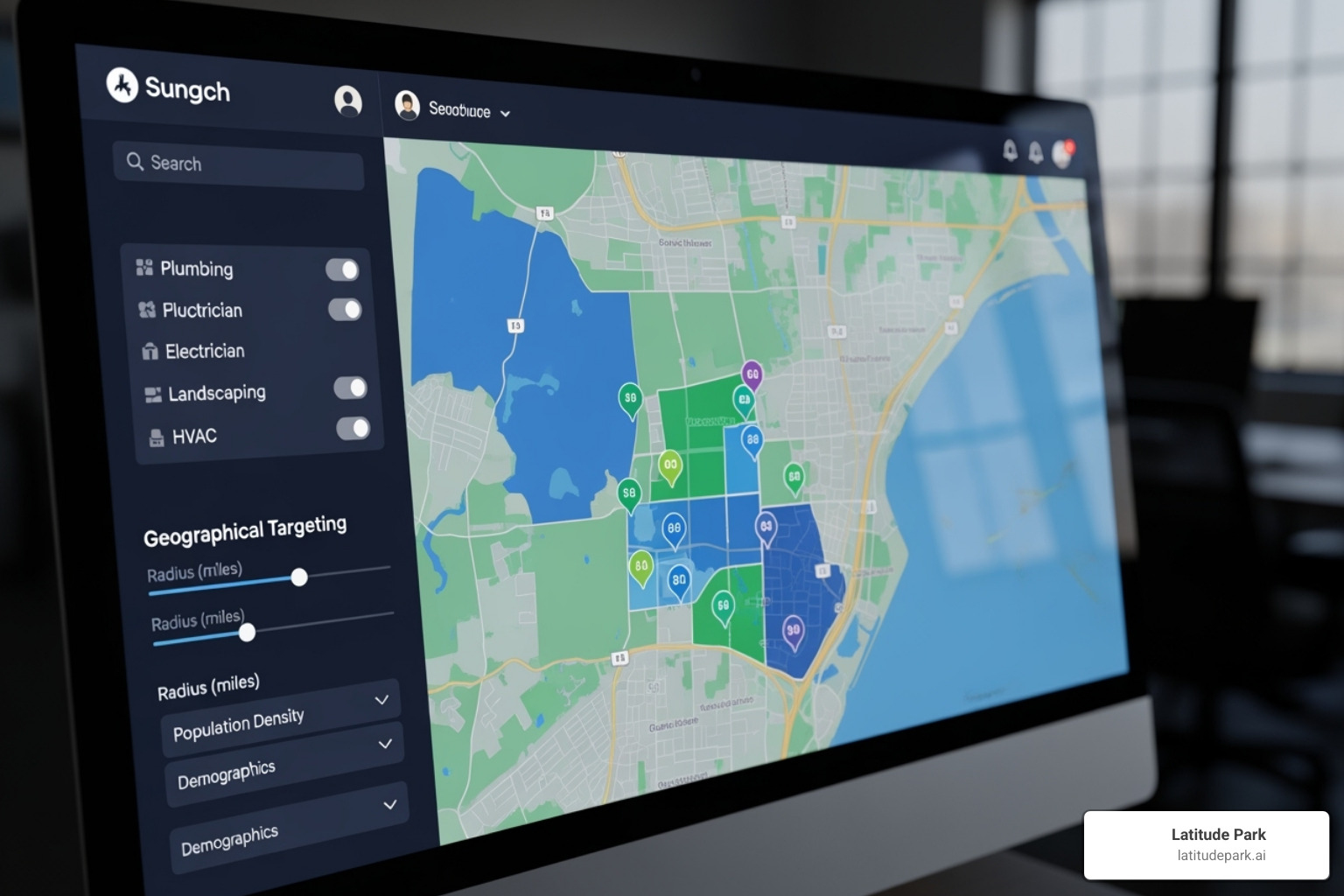
4. Set Your Budget and Go Live
We’ve reached the final step – setting your budget and launching your campaign! This is where the flexibility of Google Local Service Ads really shines. Unlike traditional advertising where you might wonder if your money is working hard enough, LSAs let you pay only for actual leads.
Setting your weekly budget is refreshingly straightforward. Google’s budget tool helps you estimate costs based on how many leads you want each week. If you’re just starting out, I recommend beginning conservatively – maybe 5-10 leads per week – and scaling up as you get comfortable with the platform and see your return on investment.

The beauty of this system is your complete control. You can adjust your budget anytime – increase it during busy seasons when you want more work, or dial it back when your schedule is full. Going on vacation? No problem! You can pause your campaign with a single click and reactivate it when you return. This prevents you from paying for leads you can’t handle while you’re away.
Once your budget is set and all your previous steps are complete, your campaign goes live! Within hours, you could be appearing at the very top of Google search results when potential customers search for your services. The excitement of receiving your first lead notification never gets old – it means a real person with a real need found your business and chose to reach out.
Congratulations! You’ve just taken a major step toward growing your business with one of the most effective local advertising platforms available.
Optimizing Your Campaigns for Maximum ROI
Getting your Google Local Service Ad campaign live is exciting, but the real magic is turning those leads into paying customers. Think of your LSA campaign as a high-performance engine that needs regular tuning for optimal performance.
The difference between a good campaign and a great one lies in the details. To achieve exceptional ROI, you must respond faster than your competition, build trust through reviews, and continuously fine-tune your approach using real performance data.
Managing Leads and Tracking Performance
Your Google Local Service Ad dashboard is your mission control center – this is where every lead lands and where you’ll track what’s working (and what isn’t). The beauty of the LSA platform is that it gives you complete visibility into your lead flow and performance metrics.
The moment a potential customer contacts you through your ad, you’ll receive a notification. Speed matters here – and I mean it really matters! Google actually tracks how quickly you respond to leads and uses this as a ranking factor. Businesses that answer calls promptly and reply to messages within minutes consistently outperform slower competitors.
You can access your Local Services Ads account online or use the mobile app to manage everything on the go. The interface is surprisingly intuitive, showing you each lead with details about the customer’s request, their contact information, and the estimated job value.
Here’s a pro tip that many businesses miss: mark your leads as “booked” or “converted” within the platform. This simple action tells Google which types of leads are valuable to your business, helping improve the quality of future leads. You can also dispute leads that seem invalid – maybe someone called asking about services you don’t offer or was clearly shopping around with no intent to hire.
The reporting features are where you’ll see your true ROI story unfold. Track how many leads converted to actual customers, monitor your cost per conversion, and calculate the lifetime value of customers acquired through LSAs. One of our clients spent $12,000 over six months on their Google Local Service Ad campaign and generated over $100,000 in revenue – that’s the kind of return that makes business owners smile!
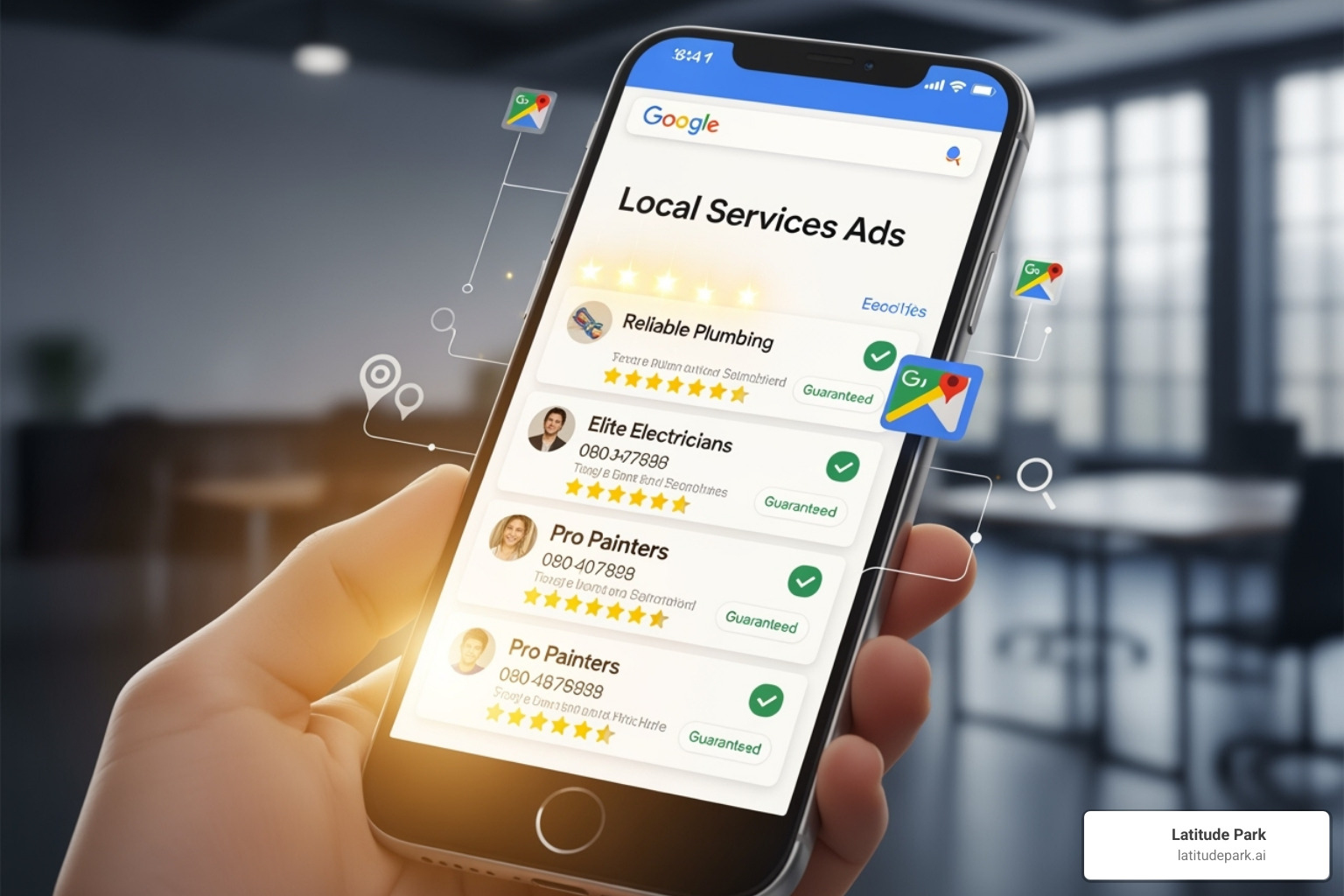
The Crucial Role of Customer Reviews
If leads are the fuel of your LSA campaign, then customer reviews are the turbo boost. Reviews don’t just make your business look good – they directly impact how often your ads appear and where they rank in the results.
When potential customers see your Google Local Service Ad, they immediately notice two things: your star rating and the number of reviews you have. Google’s algorithm pays attention to these signals too. Businesses with more positive reviews consistently rank higher and attract more qualified leads.
The magic number to aim for is at least five reviews to start building credibility, but don’t stop there. Every additional positive review strengthens your position against competitors and builds more trust with potential customers. These reviews come primarily from your Google Business Profile, which is why maintaining an active and optimized profile is crucial for LSA success.
Here’s something I always tell our clients: “A Google review is a Google ad from now until the end of time.” Unlike paid advertising that stops when you pause spending, positive reviews continue working for your business 24/7, building social proof and attracting new customers.
The best time to ask for reviews is right after completing a successful job when the customer is happiest with your service. Make it easy for them by sending a direct link to your Google Business Profile review section. For more strategies on leveraging reviews for local visibility, check out our guide on Local SEO: Optimizing Website for Local Search Results.
Advanced Optimization Strategies
Once you’ve mastered the fundamentals, it’s time to implement advanced strategies that can significantly boost your campaign performance. These tactics separate the businesses that get decent results from those that dominate their local market.
Expand your reach strategically by adding more specific job types or carefully extending your service area. If you’re a plumber who’s been focusing on basic repairs, consider adding specialized services like water heater installation or bathroom remodeling. Each additional job type creates more opportunities for your ad to appear.
Visual storytelling matters more than most businesses realize. Upload high-quality photos that showcase your best work, your professional team, and your equipment. Avoid using photos with identifiable customers, but do show the quality and professionalism that sets you apart. A picture really is worth a thousand words when someone is deciding who to trust with their home or business.
Bidding adjustments can help you capture more leads during peak demand periods. While LSAs operate on a pay-per-lead model, you can adjust your bidding strategy to be more aggressive when competition is high or during busy seasons.
Stay ahead of the curve by opting into new LSA features as Google rolls them out. The platform is constantly evolving, and early adopters often see better performance before features become widely used.
Make your business bio work harder by highlighting what makes you unique. Are you locally owned and operated? Do you offer free estimates? Are you available for emergency calls? Do you specialize in eco-friendly solutions? These differentiators help you attract customers who value what you specifically offer, leading to higher-quality leads and better conversion rates.
LSAs vs. Traditional Google Ads: What’s the Difference?
Business owners often ask how Google Local Service Ads differ from regular Google Ads. It’s a great question, as both are Google advertising tools but serve very different purposes.
Think of it this way: traditional Google Ads are like casting a wide net, while Google Local Service Ads are like spearfishing—targeting specific, high-intent customers. Both have a place in a smart marketing strategy, but understanding when to use each one can make all the difference in your results.
Key Differentiators
The most fundamental difference lies in how you pay and what you get for your money. With Google Local Service Ads, you’re operating on a pay-per-lead model – you only pay when someone actually calls or messages you through the ad. Traditional Google Ads use a pay-per-click system, meaning you pay every time someone clicks your ad, whether they become a customer or not.
| Feature | Google Local Services Ads (LSAs) | Traditional Google Ads (PPC) |
|---|---|---|
| Payment Model | Pay-per-lead (you pay when a customer calls or messages you) | Pay-per-click (you pay each time someone clicks your ad) |
| Ad Placement | Very top of Search Engine Results Page (SERP), above all other ads | Below LSAs, in various positions on the SERP, Display Network, etc. |
| Targeting | Primarily service type and geographic location (local intent) | Keywords, demographics, interests, device, audience segments |
| Key Feature | Google Guaranteed/Screened badge, direct contact | Ad extensions, rich ad formats, detailed targeting options |
| Best For | Immediate local service needs, direct customer contact | Broader marketing goals, brand awareness, e-commerce, lead forms |
Another major difference is ad placement. LSAs appear at the very top of search results, even above traditional Google Ads. This prime real estate means your business gets seen first when someone searches for your services. Traditional ads appear lower on the page, competing for attention with organic results and other paid ads.
The targeting approach is also quite different. LSAs focus primarily on service type and geographic location – perfect for capturing local customers who need immediate help. Traditional Google Ads offer much more granular targeting options, allowing you to target specific keywords, demographics, interests, and even what type of device someone is using.
Perhaps most importantly, LSAs don’t require customers to visit your website. When someone sees your Google Local Service Ad, they can call or message you directly. This removes friction from the customer journey and gets you connected with potential clients faster. Traditional ads typically send people to your website first, where they might browse around, fill out a form, or leave without contacting you at all.
The ranking factors are completely different too. LSAs prioritize proximity to the customer, your review rating, how quickly you respond to leads, and your business hours. Traditional Google Ads focus more on your bid amount, keyword relevance, ad quality, and landing page experience.
Here’s what I’ve learned from managing both types of campaigns: Google Local Service Ads excel at capturing customers who are ready to hire right now. They’ve got a broken pipe, need legal help immediately, or want their house cleaned this week. Traditional Google Ads are better for reaching people earlier in their decision-making process – maybe they’re researching options, comparing prices, or just starting to think about hiring someone.
For many of our clients, especially those in home services, combining both strategies creates a powerful one-two punch. LSAs grab the high-intent customers who need help today, while traditional ads build awareness and capture people who might hire you next month. For more insights on maximizing your traditional Google Ads strategy, check out our Google Ads Local Business Guide.
Conclusion: Start Attracting High-Quality Local Leads Today
It’s exciting to see a business transform from struggling to find customers to having a steady stream of qualified leads. That’s exactly what Google Local Service Ads can do for your service-based business.
Throughout this guide, we’ve explored how LSAs offer a refreshingly straightforward approach to digital advertising. Instead of paying for clicks that might not convert, you’re investing in actual conversations with customers who are actively searching for your services. The pay-per-lead model means every dollar you spend connects you with someone who has already expressed interest in what you offer.
The Google Guaranteed and Google Screened badges aren’t just pretty symbols – they’re trust signals that can make the difference between a customer choosing you or scrolling past to your competition. When potential customers see that Google has verified your business, checked your licenses, and stands behind your work, it removes the biggest barrier to hiring a new service provider: trust.
What makes LSAs particularly powerful is their prime real estate at the very top of search results. When someone’s basement floods or their air conditioner breaks down, they’re not browsing leisurely – they need help now. Your google local service ad puts you right where these high-intent customers are looking, exactly when they need you most.
The beauty of this platform lies in its flexibility. You can pause your campaigns when your schedule fills up, adjust your budget based on seasonal demand, and expand your service areas as your business grows. It’s advertising that adapts to your business, not the other way around.
For franchise businesses and multi-location companies, managing LSAs across different markets requires expertise and strategic thinking. Each location has unique competition levels, customer behaviors, and market dynamics that influence campaign performance.
At Latitude Park, we’ve spent years perfecting digital advertising strategies that deliver measurable results for businesses just like yours. Our experience with franchise marketing has taught us how to steer the complexities of multi-location campaigns while maintaining the local touch that makes each market successful.
Ready to start attracting those high-quality local leads? Learn more about our Google Ads management services and find how we can help your business grow through strategic digital advertising that actually works.

